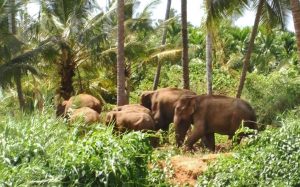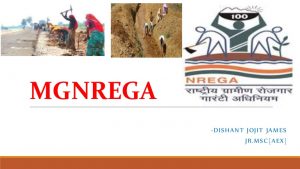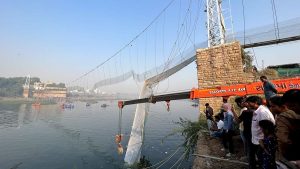Today Current Affairs: 2nd November 2022 for UPSC IAS exams, State PSC exams, SSC CGL, State SSC, RRB, Railways, Banking Exam & IBPS, etc
Table of Contents
Terai Elephant Reserve:

Centre has approved setting up Terai Elephant Reserve (TER) at Dudhwa-Pilibhit in Uttar Pradesh.
- Elephant reserves are created under Project Elephant, a centrally sponsored scheme launched in 1992.
- Tamil Nadu and Assam have the highest number of elephant reserves with five each.
- Asiatic Elephant (IUCN: Endangered) is recognized as a National Heritage Animal and has been given the highest degree of protection under Schedule 1 of the Wildlife (Protection) Act, 1972 and Appendix I of CITES.
- India has the largest population of Asian elephants with 30,000 wild and 3,600 captive ones.
MGNREGS : Flexibility At The Ground Level

An internal study commissioned by the Ministry of Rural Development has argued for decentralisation of the Mahatma Gandhi National Rural Employment Guarantee Scheme (MGNREGS), allowing for more “flexibility” at the ground level.
- There should be a greater diversification of permissible works instead of listing the types of permissible works, broad categories of works may be listed out and flexibility should be given at ground level to select the type of works as per broad categories,
- The study also flagged the frequent delay in fund disbursal, and to deal with it suggested a “revolving fund that can be utilised whenever there is a delay in the Central funds”.
- The MGNREGS wages were far below the market rate in many States, defeating the purpose of acting as a safety net.
- At present, the minimum wage of a farm labourer in Gujarat is ₹324.20, but the MGNREGS wage is ₹229.
The Mahatma Gandhi National Rural Employment Guarantee Act (MGNREGA):
- The Mahatma Gandhi National Rural Employment Guarantee Act (MGNREGA) was enacted on August 25, 2005.
- It provides a legal guarantee for one hundred days of employment in every financial year to adult members of any rural household willing to do public work-related unskilled manual work at the statutory minimum wage.
- The Ministry of Rural Development (MRD) is monitoring the entire implementation of this scheme in association with state governments.
- This act was introduced with an aim of improving the purchasing power of the rural people, primarily semi or un-skilled work to people living below poverty line in rural India.
Tragedy In Morbi:

More than 141 people lost their lives when the cable bridge over the Machhu river collapsed in Morbi, Gujarat.
- Morbi is a major hub of small and medium industry and India’s ceramics factory.
- The more than a century old bridge across the Machchhu river has long been a major tourist attraction.
- This district is flanked by Kutch district in the north, Surendranagar district in the east, Rajkot district in the south, and Jamnagar district in the west.
- Morbi is famous for its ceramic industry.
- The district is dotted by several hundred ceramic producing factories, mainly medium and small scale units.
- Around 70 per cent of India’s ceramics are produced in Morbi, and ceramic tiles manufactured here are exported to countries in the Middle East, East Asia, and Africa.
- Machchhu is a small river that rises in the Madla Hills and flows 130 km into the Rann of Kutch.
Growing Demand Of DNA Tests:

Recently the Supreme Court has voiced concerns over the increasing use of DNA to prove cases.
- Deoxyribonucleic Acid (DNA) is a set of instructions found in a cell.
- These instructions are used for the growth and development of an organism.
- The DNA of a person is unique, and variation in the sequence of DNA can be used to match individuals and identify them.
- DNA technology, therefore allows for accurate establishment of an individual’s identity.
- In addition, DNA-based technology helps in identification of victims in the event of terrorist attacks or natural disasters such as earthquakes.
- For example, DNA technology has been used to identify victims of terrorist attacks on the World Trade Centre in 2001, and disasters such as the Asian tsunami in 2004.
- Further, DNA profiling can be used in civil matters, such as parentage related disputes.
Precedents set by court:
- Bhabani Prasad Jena, 2010 & Banarsi Dass, 2005: Precedents set by the Supreme Court through the years show that judges cannot order genetic tests as a “roving enquiry” ( Bhabani Prasad Jena, 2010) and they must balance “the interests of the parties” ( Banarsi Dass, 2005).
- DNA tests should also not be ordered if there was other material evidence at hand to prove the case.
- Ashok Kumar v. Raj Gupta 2021: The court said judges, before ordering a genetic test, should examine “proportionality of the legitimate aims” being pursued.
Anti-Superstition Laws:

The recent killings of two women in Kerala have sparked a debate about the prevalence and power of superstitious beliefs in society.
- As per the 2021 report of the National Crime Records Bureau (NCRB), six deaths were linked to human sacrifices, while witchcraft was the motive for 68 killings.
- The maximum number of witchcraft cases were reported from Chhattisgarh (20), followed by Madhya Pradesh (18) and Telangana (11).
- In 2020, India saw 88 deaths due to witchcraft and 11 died as part of ‘human sacrifices’, the NCRB report states.
- In India, there is no central law that exclusively deals with crimes related to witchcraft, superstition, or occult-inspired activities.
- In 2016, Prevention of Witch-Hunting Bill was introduced in the Lok Sabha, but it wasn’t passed.
- The draft provisions included punishment for accusing or identifying a woman as a witch, use of criminal force against a woman, or torture or humiliation on the pretext of performing witchcraft.
- Section 302 (punishment for murder) of IPC (Indian Penal Code) takes cognisance of human sacrifice, but only after the murder is committed, likewise, Section 295A works to discourage such practices.
- Article 51A (h) of the Indian Constitution makes it a fundamental duty for Indian citizens to develop the scientific temper, humanism and the spirit of inquiry and reform.
- Other provisions under the Drugs and Magic Remedies Act, 1954 also aim to tackle the debilitating impact of various superstitious activities prevalent in India.
Football4Schools Initiative:

The Ministry of Education has signed an MoU with Federation Internationale de Football Association (FIFA) and All India Football Federation (AIFF) for the ‘Football4Schools’ initiative in India.
- The Football4Schools program is a step towards translating Prime Minister’s vision of making sports a way of life as well as creating well-rounded citizens.
- It aims to empower 25 million young boys and girls in India through sports-integrated learning.
- It espouses the spirit of National Education Policy (NEP), 2020.
- Objectives:
- Empower learners (boys and girls) with valuable life skills and competencies.
- Empower and provide coach-educators with the training to deliver sport and life-skills activities.
- Build the capacity of stakeholders (Schools, Member Associations and public authorities) to deliver training in life skills through football.
- Strengthen the cooperation between governments and participating schools to enable partnerships, alliances and intersectoral collaboration.
India’s Biggest Hyperscale Data Centre Yotta D1:

While inaugurating north India’s first hyperscale data centre ‘Yotta D1’, the Chief Minister of Uttar Pradesh explained that the state achieved the target of installing 250 MW of storage capacity with an investment of Rs 20,000 crore within a year of launching its data centre policy.
- Yotta D1, built at a cost of Rs 5,000 crore, is the country’s biggest and UP’s first data centre.
- It is spread over an area of 3 lakh square feet at the upcoming Data Centre Park in Greater Noida, Uttar Pradesh.
- The data centre will increase data storage capacity of the country, which until now stood at 2% only despite the fact that 20% of the world’s data is consumed by Indians.
- It is also expected to increase Gross State Domestic Product (GSDP) significantly while creating new avenues for investment and huge employment opportunities.
- Yotta D1 features Internet peering exchanges and direct fibre connectivity to and from global cloud operators, making it extremely useful for global connectivity.
- Yotta D-1 will be the first pillar of North India’s 5G revolution.
- India’s data analytics industry is estimated to reach more than $16 billion by 2025.
- Therefore, paying special attention to promoting investment in data centre infrastructure is a step in the right diretion.
- The presence of a data park would allow big companies like Google and Twitter to have a data centre for hosting, processing and storing data.
- With 5G and edge data centres rolled out from this centre, consumers will get easy access to videos and banking facilities at a fast pace.




